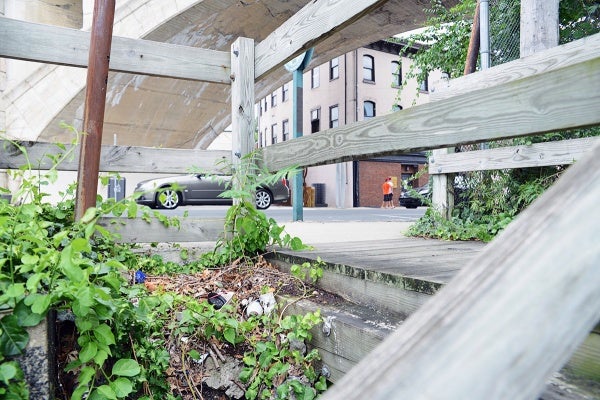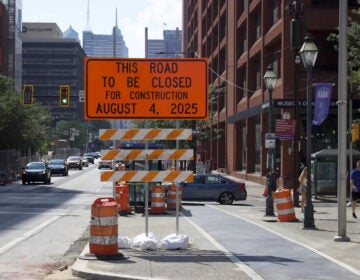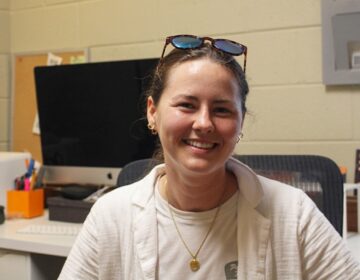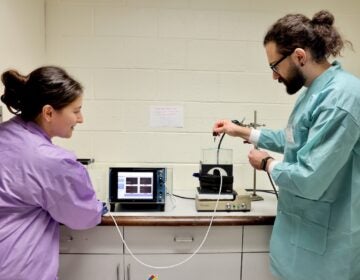In move to renew Manayunk Special Services District, a look at shifting priorities
How far off Manayunk’s Main Street does “Main Street” go? It’s a central question in an ongoing effort to renew the Main Street Special Services District (MSSD) for another 10 years.
Established in 1997, the MSSD works in conjunction with the Manayunk Development Corporation, doing street maintenance and other projects paid for by assessments on commercial properties on and adjacent to Main Street.
The Manayunk Neighborhood Council thinks the Main Street of the late last century is different from today, and has asked Councilman Curtis Jones, Jr. to delay action on legislation authorizing the renewal. They want the district enlarged, and for business property owners to take more financial responsibility for the effects on residential homes, ideas the MSSD has rejected.
Others, at a hearing last week in the MDC’s offices, said they wanted more attention paid to trash and litter cleanup, currently handled by a two-man team who look after an area that includes about 230 properties, stretching from Leverington Avenue to Shurs Lane, and from the Schuylkill River to Cresson Street.
(By comparison: The Center City District, according to its website, has 100 workers patrolling 120 square blocks, keeping streets and sidewalks clean for about 4,500 assessed commercial properties.)
“Are you going to have more money to clean things? It’s dirty,” one business owner asked MDC director Jane Lipton at the hearing.
From its creation in until recently, both the MDC and the Special Services District were governed by the same board, Lipton said. The two are separate now, though many of the names are the same, with developer Dan Neduscin as the MSSD president and restaurateur Bruce Cooper head of its board of directors.
Shifting priorities for 2012 and beyond
In 2011, the MSSD budget included only $50,000 for maintenance, cleaning and repairs, but it included $106,938 for capital improvements, including public art projects like the painted turtles in pedestrian crosswalks, artist Matt Tomezsko’s scattered gallery of striking painted portraits, and the Thoughtbarn Project lighting on the canal.
In the district’s 2010-2011 annual report, Neduscin said those attention-getting projects help secure larger projects, like the ongoing Venice Island reconstruction and the Manayunk Bridge trail. But public art doesn’t pick up greasy paper plates left by late-night pizza eaters or stop solicitors from flyering doors along Main Street.
Lipton said the priorities for the special services district are beginning to change, with the 2013 budget seeing more spent on maintenance and less on capital projects and marketing, of which the MDC will take a greater share. In exchange, she said, MDC will shift money into the MSSC’s budget for cleaning and repairs, though it’s a reallocation of existing funds and not new or extra money. The 2013 budget for the district shows $130,000 allocated for cleaning, but the amount the SSD is contributing is the same — the other $80,000 will come from the MDC.
There’s hope of adding an additional part-time maintenance worker in 2013, but Lipton said it’s not a guarantee. “My goal, as director of MDC, is to try to find a way to get more money into that,” she said.
The MNC has also been trying to get the special services district to take a second look at its boundaries and responsibilities beyond Main Street. They’ve sent a letter to Jones, asking for a 60-day delay to allow for more public input.
Michelle Wilson, Jones’ spokeswoman, said Friday the 60-day period would take care of itself, as the legislation was introduced in late June but the matter won’t be taken up again until City Council reconvenes in September.
A call for boundary re-evaluation
MNC members say the “Main Street” district’s boundaries have enlarged since 1996, with more businesses on Cresson Street and along side streets. And, they contend, the mix of businesses has changed significantly enough to warrant a re-evaluation of how businesses are assessed.
“I support the special services district, but I really think that the district has enlarged,” said MNC trustee Hilary Langer. “The impact of what goes on on Main Street is not just Main Street. The area of operation and impact of Main Street actually goes beyond Main Street, and goes beyond Cresson Street.”
Lipton said the MSSD’s steering committee considered, and rejected, both expansion of its boundaries and a recalculation of how it determines assessments during preparation for its renewal.
“Most districts don’t do capital projects, most districts don’t do marketing, most concentrate on just cleaning the streets,” Lipton said.
When the MSSD was established in the late ’90s, Main Street was peppered with eclectic, high-end retailers, art galleries and neighborhood legacy businesses, and a growing number of bars. These days, Main Street is heavy on places to eat and drink — and places to work off those indulgences.
As MNC staffer Howard Moseley pointed out, the number of fitness-related businesses on and just off Main Street is flourishing, both places to work out and places to buy the equipment and clothing to go along. And, he pointed out, those aren’t the sort of businesses that see patrons leaving trash behind.
NewsWorks has partnered with independent news gatherer PlanPhilly to provide regular, in-depth, timely coverage of planning, zoning and development news. Contact Amy Z. Quinn at azquinn@planphilly.com.
WHYY is your source for fact-based, in-depth journalism and information. As a nonprofit organization, we rely on financial support from readers like you. Please give today.











